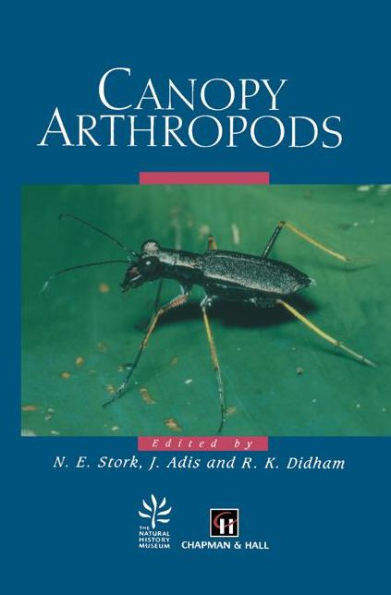Table of Contents
List of contributors. Preface. Part One: Methods of Studying Arthropods in Trees. 1. Sampling arthropods from tree-crowns by fogging with knockdown insecticides: lessons from studies of oak tree beetle assemblages in Richmond Park (UK); N.E. Stork, P.M. Hammond. 2. A review of methods for sampling arthropods in tree canopies; Y. Basset, N.D. Springate, H.P. Aberlenc , G. Delvare. 3. Advances in using the canopy fogging technique to collect living arthropods from tree-crowns; W.Paarmann, K. Kerck 4. Knockdown efficiency of natural pyrethrum and survival rate of living arthropods obtained by canopy fogging in Central Amazonia; J. Adis, W. Paarmann, C.R.V. da Fonseca, J.A. Rafael. Part Two: Community Structure of Coleoptera Assemblages. 5. Beetle species diversity and faunal similarity in Venezuelan rainforest tree canopies; J.G. Davies, N.E. Stork, M.J.D. Brendell, S.J. Hine. 6. Host-specificity and the effective specialization of tropical canopy beetles; N.A. Mawdsley, N.E. Stork. 7. Determinants of species richness in assemblages of canopy arthropods in rainforests; R.L. Kitching, et al. 8. Canopy arthropods of coastal Sitka spruce trees on Vancouver Island, British Columbia, Canada; N.N. Winchester. 9. The beetle fauna of different tree species in forests of Rwanda and East Zaire; T. Wagner. 10. Tree-crown beetles in context: a comparison of canopy and other ecotone assemblages in a lowland tropical forest in Sulawesi; P.M. Hammond, N.E. Stork, M.J.D. Brendell. 11. Patterns of beetle species diversity in Castanopsis acuminatissima (Fagaceae) trees studied with canopy fogging in mid-montane New Guinea rainforest; A. Allison, G.A. Samuelson, S.E. Miller. 12. Species abundance and body size relationships in insect herbivores associated with New Guinea forest trees, with particular reference to insect host-specificity; Y. Basset. 13. Arthropod biodiversity in the canopy of New Caledonian forests; E. Guilbert. Part Three: Community Structure of Non-Coleopteran Assemblages. 14. Diversity of an Amazonian canopy grasshopper community in relation to resource partitioning and phylogeny; C. Amedegnato. 15. Dipteran tree-crown assemblages in a diverse southern temperate rainforest; R.K. Didham. 16.Diversity and recolonization dynamics of selected arthropod groups on different tree species in a lowland rainforest in Sabah, Malaysia with special reference to Formicidae; A. Floren, K.E. Linsenmair. 17. The ant fauna of tree canopies in Central Amazonia: a first assessment; A.Y. Harada, J. Adis. 18. Estimation of arboreal and terrestrial arthropod densities in the forest canopy as measured by insecticide smoking; H. Watanabe. Part Four: The Biology of Canopy Arthropods. 19. The ecology and behaviour of arboreal dung beetles in Borneo; A.J. Davis, J. Huijbregts, A.H. Kirk-Spriggs, J. Krikken, S.L. Sutton. 20. Studies on the biology of a canopy-dwelling carabid beetle collected by canopy fogging in the rainforest of Sulawesi (Indonesia); W. Paarmann, D. Paarmann. 21. Bioacoustic monitoring of insect communities in a Bornean rainforest canopy; K. Riede. 22. Spatial and temporal use of microhabitats as a key strategy for the colonization of tree bark by Entomobrya nivalis L. (Collembola: Entomobryidae); A. Prinzing. 23. The epiphytic lichen Evernia prunastri L. as a habitat for arthropods: shelter from desiccation, food-limitation and indirect mutualism; A. Prinzing, H.-P. Wirtz. Part Five: The Management and Conservation of Canopy Arthropods. 24. Distinguishing the woods from the trees; B.J. Richardson, S. Burgin, F.F. Azarbayjani, S. Lutubula. 25. Insect biomass in Amazonian forest fragments; J.R. Malcolm. 26. The significance of edge effects in the management of forests for invertebrate biodiversity; C.M.P. Ozanne, C. Hambler, A. Foggo, M.R. Speight. 27. Canopy arthropod studies for the future; N.E. Stork, R.K. Didham, J. Adis.




